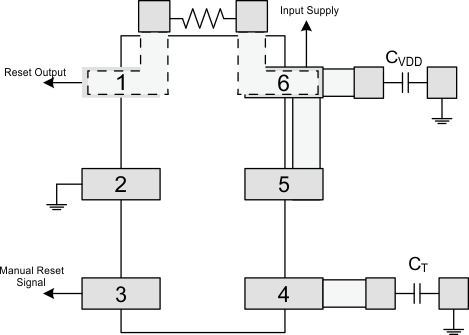SBVS085J January 2007 – June 2017
PRODUCTION DATA.
- 1 Features
- 2 Applications
- 3 Description
- 4 Revision History
- 5 Device Comparison Table
- 6 Pin Configuration and Functions
- 7 Specifications
- 8 Detailed Description
- 9 Applications and Implementation
- 10Power Supply Recommendations
- 11Layout
- 12Device and Documentation Support
- 13Mechanical, Packaging, and Orderable Information
封装选项
机械数据 (封装 | 引脚)
散热焊盘机械数据 (封装 | 引脚)
- DRV|6
订购信息
11 Layout
11.1 Layout Guidelines
TI recommends placing the 0.1-µF decoupling capacitor close to the VDD pin. The VDD trace should be able to carry 6 µA without a significant drop in voltage.
11.2 Layout Example
 Figure 18. Recommended Layout
Figure 18. Recommended Layout